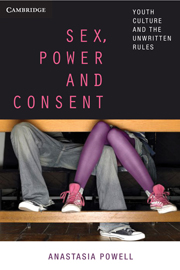2 - Generation Y
Problematic representations of youth and sex
Published online by Cambridge University Press: 03 May 2011
Summary
Turn to print and television media or public debate and the message is consistent: youth are a problem in need of a solution. According to the media, public officials and many parents, youth crime is up and teenage sex and oral sex have reached epidemic proportions at the same time that school results, homework and university ambition have gone down. Yet, ‘hardly anybody has confronted them with the plain fact that all of those statements are false’. What has not changed is the tendency of adult generations to become anxious about perceived problem shifts in youth values and behaviours. This is perhaps especially true when it comes to youth sexuality. As University of London youth sexuality researcher Peter Aggleton and his colleagues exclaim: ‘Put the words “youth” and “sex” together and you are sure to generate controversy’. Yet if we take a closer look at youth sexuality we see that while some things have indeed changed, many things have changed much less than is commonly believed.
I begin by setting the scene of youth sexuality with a brief review of the changes experienced by Gen-Y in the Western context. There are a number of challenges faced by today's young people, brought about largely by the processes of modernity and in particular an advanced consumer-capitalist society, as well as gendered social change.
- Type
- Chapter
- Information
- Sex, Power and ConsentYouth Culture and the Unwritten Rules, pp. 10 - 28Publisher: Cambridge University PressPrint publication year: 2010



